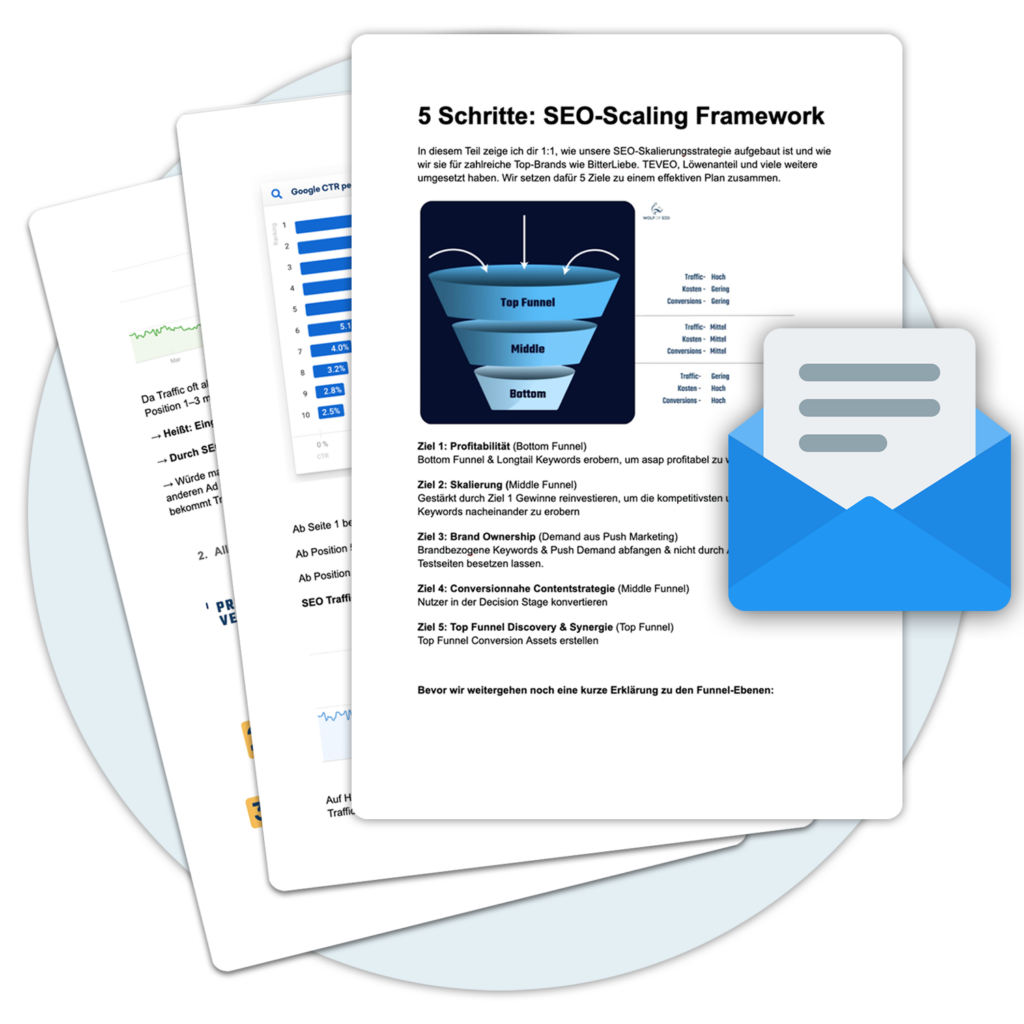Definition of touchpoints
Touchpoints are the contact points at which a potential customer comes into contact with a company, a brand or a product. They form the interface between the company and the customer and play a decisive role in the Customer Journey. Touchpoints can take place both online and offline and can take a variety of forms, such as advertisements, websites, emails, social media, retail stores, events and much more.
The definition of Touchpoints is fundamental to understanding the importance and potential of these points of interaction between companies and customers. They enable companies to get in touch with potential customers, communicate information, offer products or services and ultimately build and maintain customer relationships.
The importance of touchpoints
The importance of Touchpoints cannot be underestimated. They are the key to successful customer communication and loyalty. Through effective Touchpoints companies can gain a competitive advantage and retain their customers in the long term.
Effective Touchpoints enable companies to address their target group directly and offer them a positive brand experience. Customers can be convinced of the benefits of a product or service through targeted touchpoints.
In a world where the competition is just a click away, it is crucial to strengthen customer loyalty. Through well-designed Touchpoints companies can ensure that customers return to them again and again and recommend their products or services to others.
The most important reasons why Touchpoints are so important:
- Strengthening customer loyalty: Effective Touchpoints create an emotional connection between the company and its customers, which leads to long-term customer loyalty.
- Increase the purchase decision: Through targeted Touchpoints companies can arouse the interest of potential customers and ultimately persuade them to buy.
- Improvement of the brand experience: Well designed Touchpoints enable companies to improve their brand experience and offer customers a unique experience.
- Competitive Advantage: Companies that offer effective Touchpoints can set themselves apart from the competition and gain a competitive advantage.
In total play Touchpoints play an essential role for companies in engaging with their customers, retaining their loyalty and strengthening their competitiveness. Companies should therefore Touchpoints carefully and optimize it continuously.
Competitive advantage through effective touchpoints
Effective Touchpoints offer companies a competitive advantage over their rivals. If a company has multiple points of contact with potential customers, it has more chances of attracting their attention and building a strong connection with them.
By providing companies with effective Touchpoints By creating a better customer experience, they can get to know their target group better and understand their needs and preferences. This knowledge enables companies to create customized offers and experiences that are tailored to the individual needs and preferences of their customers.
Another advantage of effective Touchpoints lies in increasing brand awareness and brand image. If a company is present at various touchpoints and uses consistent messages and an appealing brand design, it will be remembered by customers and build a positive image.
Competitive advantages through effective Touchpoints include:
- Increase customer loyalty: Through effective Touchpoints can build a long-term relationship with customers, which leads to greater customer satisfaction and loyalty.
- Increasing the conversion rate: Effective Touchpoints can persuade potential customers to decide to make a purchase or take another desired action.
- Improving the customer experience: Effective Touchpoints offer customers a seamless and enjoyable experience along their Customer Journey.
- Differentiation from the competition: Companies that offer effective Touchpoints They stand out from their competitors and can position themselves as a unique brand.
To gain a competitive advantage through effective Touchpoints To achieve this, it is important that companies know their target group and understand exactly which touchpoints they need to address and which messages they need to convey. Strategic planning and continuous optimization of Touchpoints are crucial in order to derive the maximum benefit.
Increase customer loyalty
Effective customer loyalty is a decisive factor for the long-term success of a company. By increasing customer loyalty, companies can not only increase their competitiveness, but also promote customer loyalty and create new sales opportunities. Customer retention is a multi-layered process that involves various Touchpoints includes.
Effective Touchpoints can help to bind customers more closely to the company and build a long-term business relationship. It is important to address customers in a targeted manner during the various phases of the purchasing process and to convey targeted messages.
A Touchpoint can be, for example, a personalized email campaign that motivates the customer to make repeat purchases or a loyalty program that rewards the customer for their loyalty. Through the use of effective Touchpoints companies can gain the trust of customers and successfully build a long-term relationship.
Important points for increasing customer loyalty:
- Direct communication with customers
- Individual approach and personalized offers
- Use of customer data for targeted Content
- Fast response to customer feedback
- Excellent customer care and customer service
Through the strategic design of Touchpoints and a focus on increased customer loyalty, companies can build long-term customer relationships and exploit their growth potential.
Types of touchpoints
The types of Touchpoints are diverse and can take place both online and offline. Each Touchpoint offers the opportunity to reach customers and create positive experiences. Here are some of the most important types of Touchpoints at a glance:
Online touchpoints:
- Website: The website is often the first point of contact between a company and its customers. An appealing and user-friendly website can boost customer confidence and encourage them to interact further.
- Social media: Platforms such as Facebook, Instagram and Twitter offer the opportunity to get in direct contact with customers and inform them about current offers and news. Through targeted advertising campaigns, companies can increase their Range and gain new customers.
- Email marketing: By regularly sending informative newsletters and personalized offers, companies can strengthen customer loyalty and encourage repeat purchases.
Offline touchpoints:
- Physical transactions: A physical store offers the opportunity to present products live and advise customers personally. Through appealing store design and good customer service, companies can create a unique brand experience.
- Trade fairs and events: Participating in trade fairs and events allows companies to make direct contact with potential customers and present their products or services. These personal interactions can promote the development of trust and customer loyalty.
- Print media: Advertisements in newspapers, magazines or brochures can be an effective way of drawing customers' attention to a product or service. Targeted placement and appealing design can attract the attention of potential customers.
Choosing the right Touchpoints depends on the target group and the company's specific objectives. Strategic planning and targeted implementation can help companies to achieve effective Touchpoints and achieve their marketing goals.
Online touchpoints
OnlineTouchpoints play a crucial role in customer communication and offer numerous opportunities to improve the customer experience and strengthen brand loyalty. In the following, various aspects of the design and use of onlineTouchpoints explained.
1. website: The company website is a central Touchpointthat enables companies to present information, showcase their products and services and facilitate customer interaction. A well-designed and user-friendly website is therefore essential to attract and convince potential customers.
2. social media: Social media platforms offer companies the opportunity to present their Range interact with customers in real time and receive valuable feedback. By maintaining an active presence on platforms such as Facebook, Instagram or Twitter, companies can increase their brand awareness and build customer relationships.
3. email marketing: Email marketing is an effective way of communicating with customers, informing them about news and promotions and keeping them loyal to the company. Through personalized and relevant content, companies can arouse the interest of customers and increase their conversion rates.
4. Search engine marketing: Through Search engine marketing, insbesondere durch Suchmaschinenoptimierung (SEO) und suchmaschinenbasierte Werbung (SEA), können Unternehmen ihre Sichtbarkeit in den Suchmaschinenergebnissen erhöhen und potenzielle Kunden gezielt ansprechen. Eine gute Positionierung in den Suchergebnissen kann das Vertrauen der Kunden stärken und zu einer erhöhten Klickrate führen.
5. mobile apps: Mobile apps offer companies the opportunity to provide a personalized and interactive user experience. Functions such as push notifications, individualized offers and intuitive user interfaces enable companies to deepen customer relationships and gain loyal customers.
6. customer ratings and reviews: Customer ratings and reviews are an important Touchpointwhich influences the trust of potential customers. Companies should therefore actively ask for feedback and reviews in order to increase the credibility of their brand and convince potential customers.
Offline touchpoints
OfflineTouchpoints are all contact points at which a company comes into physical contact with its customers, beyond the digital world. They play an important role in the Customer Journey and can significantly influence the success of your company.
In contrast to onlineTouchpoints enable offlineTouchpoints direct interaction with customers. They offer the opportunity to build personal relationships and create trust. The physical presence allows companies to present their products or services in a different way and appeal to customers' senses.
Some examples of offlineTouchpoints are:
- Stores: Here, customers can see, touch, try out and buy the products directly.
- Events and trade fairs: By participating in events and trade fairs, companies can strengthen their presence and get to know potential customers personally.
- Customer service on site: Personal advice and assistance can help customers solve problems and have a positive customer experience.
- Advertising material: Brochures, flyers or posters can provide information about the company and its products and arouse the interest of customers.
- Print ads: Advertisements in newspapers, magazines or advertising brochures can draw the attention of potential customers to the company and encourage them to buy.
It is important to use offlineTouchpoints into the company's overall strategy and ensure that they are aligned with customers' needs and expectations. By effectively designing and utilizing the offlineTouchpoints companies can increase their brand awareness, gain the trust of customers and build long-term relationships.
Design of effective touchpoints
For the design of effective Touchpoints it is important that they offer a positive and consistent experience both online and offline.
When designing onlineTouchpoints the design should be user-friendly and appealing. Clear and intuitive user guidance and fast loading times are crucial to avoid losing customers. It is also important to make the website or app responsive to ensure optimal display on different devices.
In order to create trust, onlineTouchpoints have a professional appearance and indicate safety. A clear product presentation, meaningful product descriptions and customer reviews can have a positive influence on the purchase decision.
OfflineTouchpoints can be, for example, the physical store, advertisements, brochures or flyers. Here it is important that these Touchpoints fit the company and appeal to the desired target group. A uniform design and a clear brand message are also of great importance.
Another aspect of designing effective Touchpoints is personalization. The better a Touchpoint The more personalized the customer experience, the higher the likelihood of a positive response. An individual approach, personalized offers or recommendations can improve the customer experience.
Introduction to the design of online touchpoints
The design of onlineTouchpoints plays a crucial role in the interaction with customers and significantly influences their experiences and impressions. It's about creating a seamless and engaging user experience to encourage customers to act and convert.
To ensure effective onlineTouchpoints the following elements should be taken into account:
- Visual design: The visual design of an onlineTouchpointsincluding colors, images and fonts, should match the brand identity and message. An appealing design can attract visitors' attention and positively influence their emotions.
- Ease of useUser-friendliness is an important factor in enabling customers to navigate the website easily and intuitively. A clear layout, clear structures and meaningful interaction options help customers feel comfortable on the website and find the information they need quickly.
- Responsive design: In view of the increasing use of mobile devices, it is important that onlineTouchpoints also work well on smartphones and tablets. A responsive design ensures that the website is displayed optimally on different screen sizes so that the user experience is not impaired.
- Call-to-Action: An effective onlineTouchpoint contains clear calls to action to motivate visitors to take action. This can be done, for example, with eye-catching buttons or links that encourage visitors to click on, request information or buy products.
By the design of onlineTouchpoints By taking these aspects into account and responding to the needs and expectations of customers, an optimal user experience can be created, which ultimately leads to a higher conversion rate and customer satisfaction.
Development of offline touchpoints
When setting up offlineTouchpoints is about creating physical interactions with potential customers to promote positive brand perception and customer loyalty. Here are some strategies and tactics that can help:
- Site selection: Choosing the right location for offlineTouchpoints can be decisive. It is important that the location is easily accessible and frequented by the target group.
- Visibility: Good visibility is also of great importance. OfflineTouchpoints should be placed in such a way that they are easy to find and recognize.
- Attractive design: An appealing design is crucial to attract the attention of potential customers. Visual elements such as images, colors and fonts can help create a positive brand perception.
- Interactivity: OfflineTouchpoints should be designed interactively to encourage active participation by potential customers. This can be achieved, for example, through games, competitions or product presentations.
- Personification: The use of staff can help to build a personal relationship with potential customers. Friendly and competent employees can provide support with questions or advice.
- Measurability: Even with offlineTouchpoints it is important to measure success in order to check the effectiveness of the measures. This can be done through customer surveys, participation figures or sales figures, for example.
The role of touchpoints in SEO
The role of Touchpoints in search engine optimization (SEO) is of great importance for the success of an online marketing strategy. Touchpoints are the points of contact between companies and potential customers where they can meet and interact. In terms of SEO, the Touchpoints are crucial, as they can help to improve the visibility of a website in search engine results.
An effective Touchpoint in terms of SEO, for example, is a well-optimized landing page. Here it is important to use relevant keywords in the meta tags, headings and text content in order to achieve a higher ranking. Ranking-position. In addition, the site should offer clear and user-friendly navigation and high-quality content to improve the user experience.
Other important Touchpoints in terms of SEO are external links. By building relevant and high quality Backlinks from other websites can increase the authority and visibility of a website. It is advisable, Backlinks from thematically similar and reputable websites.
A good user experience (UX) also plays a crucial role. If users find a website user-friendly and informative, they will stay on the site longer and possibly generate more page views. This engagement is noticed by search engines and can lead to a better ranking in search results.
However, search engine optimization not only includes on-page factors, but also off-page optimization. Social media platforms offer another way to connect with potential customers and build trust. Through regular and relevant posts and interaction with followers, companies can increase their brand awareness and thus improve their visibility in search engine results.
Examples of successful touchpoints
Touchpoints are the various points of contact that a company has with its customers. They are crucial to the success of a marketing strategy and can play a major role in customer loyalty and building a strong brand relationship.
There are many different types of Touchpointsthat a company can use to get in touch with its customers. Here are some examples of successful Touchpoints:
| Touchpoint | Purpose | Example |
|---|---|---|
| Website | Inform and convince | A company offers a well-designed website with relevant information and an appealing design. |
| Social media | Interaction and customer loyalty | A company uses social media channels such as Facebook and Instagram to communicate with and engage customers. |
| Email marketing | Personalized communication | A company regularly sends personalized emails to inform customers about offers and news. |
| Physical transactions | Personal shopping experience | A company creates a pleasant atmosphere in its physical stores and provides excellent customer service. |
| Customer service hotline | Customer support and problem solving | A company offers an easily accessible hotline to support customers with questions and problems. |
| Packaging and product presentation | Brand representation and recognition | A company attaches importance to appealing packaging and an attractive product presentation to represent its brand. |
It is important that the Touchpoints of a company are consistent and well thought out in order to achieve a strong impact on customers. By effectively designing the Touchpoints a company can improve its customer loyalty and gain a competitive advantage. erlangen.
Summary: The power of touchpoints
The power of Touchpoints should not be underestimated. Touchpoints are the contact points between a company and its customers, where customers interact with the company or receive information.
Effective Touchpoints can have an enormous impact on the success of a company. They can help to create a competitive advantage. erlangenincrease customer loyalty and ultimately increase sales.
Through the targeted design of Touchpoints a company can build positive customer relationships and give customers the feeling that they are being well looked after. This leads to long-term customer loyalty and strengthens brand loyalty.
There are several types of Touchpointsboth online and offline. OnlineTouchpoints include, for example, the company website, social media, emails and online advertising. OfflineTouchpoints can be physical stores, customer service hotlines and printed advertising materials.
In the design of Touchpoints the design is essential. OnlineTouchpoints must be designed in an appealing and user-friendly way in order to create a positive User Experience to offer. OfflineTouchpoints should aim to communicate the brand message effectively and offer customers added value.
The role of Touchpoints in SEO is also of great importance. Through an optimal design of the Touchpoints companies can improve their visibility in search engine results and better target potential customers.
Examples of successful Touchpoints There are many. A good example is personalized customer communication through emails or newsletters that send the customer relevant offers and information. A smooth and user-friendly ordering process on a company's website can also be a successful Touchpoint be
In total Touchpoints have a great power to strengthen customer loyalty and increase the company's success. Companies should therefore utilize the possibilities of Touchpoints and use them in a targeted manner to improve their customer relationships and achieve long-term success.
« Back to Glossary Index






